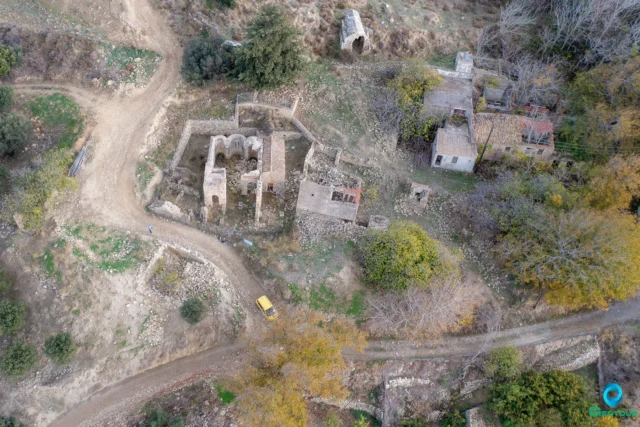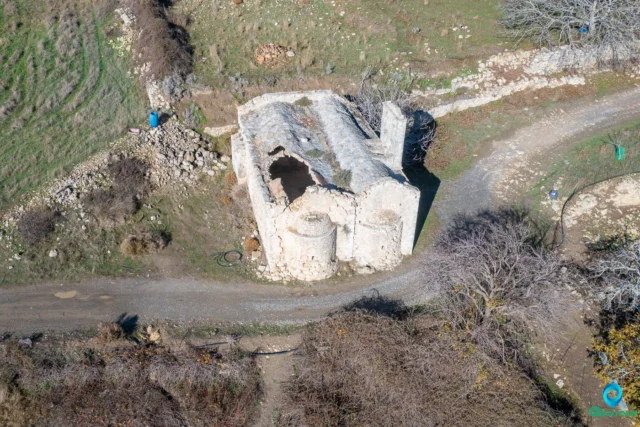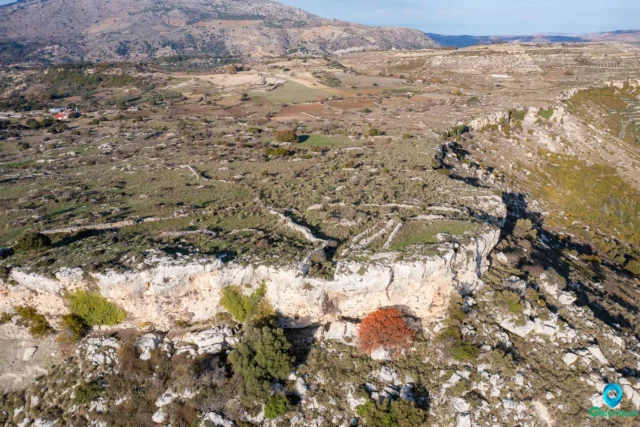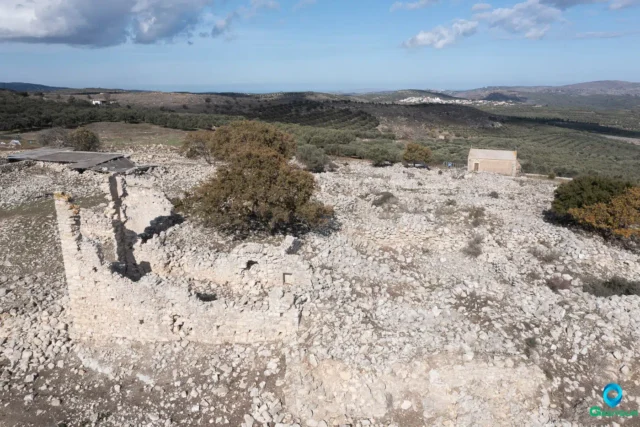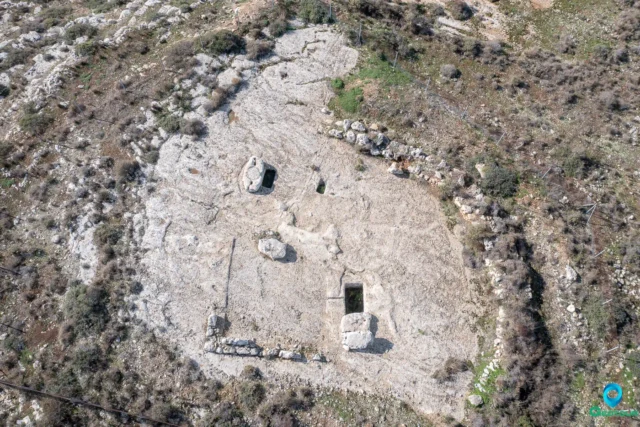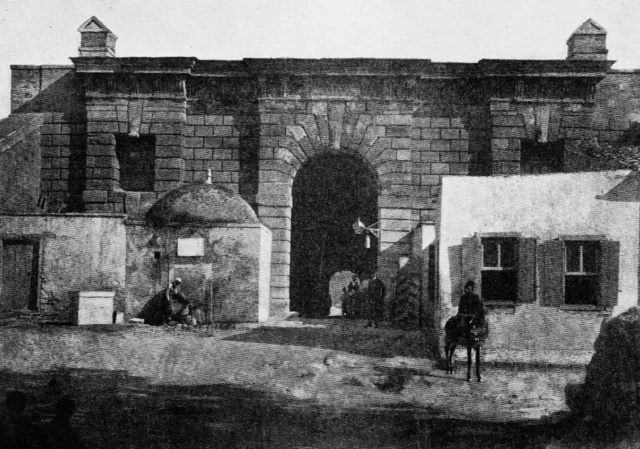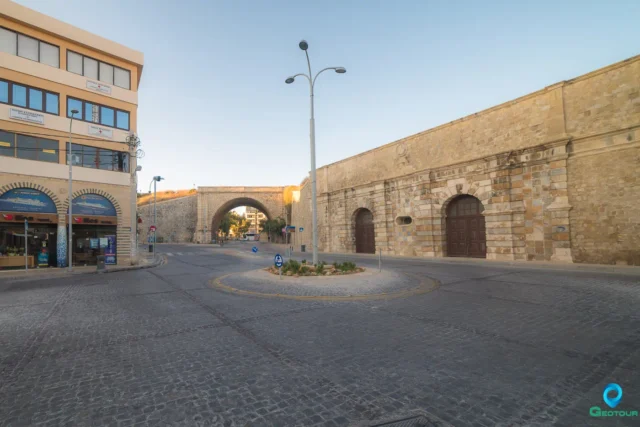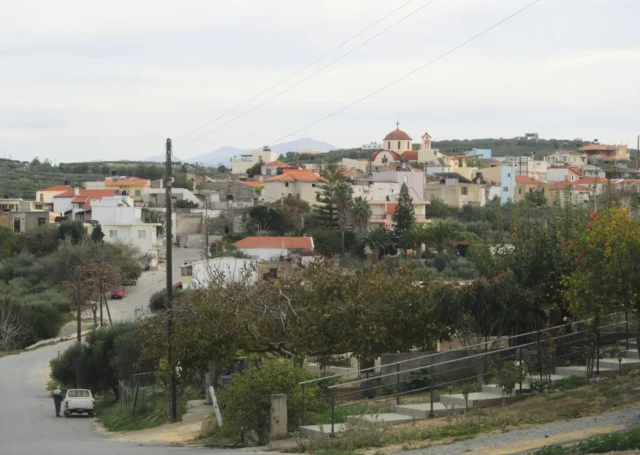829
listings found
Categories
Active filters:
Mikra Episkopi
Mikra Episkopi is an abandoned village in Crete, Greece. Once known as the seat of the Diocese of Arcadia, it is now deserted with dilapidated houses and overgrown paths. The village is located 7 km southwest of Arkalochori and 1 km north of Partira. Despite its current state, Mikra Episkopi holds historical significance, particularly due to the ruined church of Sotiras Christos (Savior Christ), a Venetian-era structure built upon the remains of an earlier basilica. The church features a cruciform architectural style with a dome and a narthex, with some walls, columns, and capitals still visible. Additionally, the village has the church of Panagia (Virgin Mary) with Venetian-era frescoes and the ruins of the church of Agios Dimitrios (Saint Demetrius).
The population of Mikra Episkopi has dwindled over the centuries, from a mix of Christians and Muslims in the 1800s to becoming completely abandoned in the 1990s. Recent census data shows a slight increase in population, but the village remains largely deserted.
Agioi Apostoloi Church (Holy Apostles), Alagni
Located on Tholoi hill near Alagni, this is a 15th-16th century double-aisled Byzantine church dedicated to Apostles Peter and Paul. It features the Venetian Cornaro family coat of arms and two arcosolia (arched tombs), one externally dated to 1614. Situated near the 16th-17th century Tholoi fortress, it was part of the local defense network. Damaged in the 2021 Arkalochori earthquake, the site, owned by the Monastery of Sinai, is now abandoned and neglected.
The Necropolis of Phourni
The Phourni necropolis, near Archanes, Crete, is a significant Minoan burial site used from the Early Minoan II (EM II) to the Late Minoan IIIC (LM IIIC) periods. It features a variety of tomb types, including tholos tombs, rectangular tombs, and composite tombs, reflecting the evolution of Minoan funerary architecture and burial practices over time. Tholos tombs are beehive-shaped structures used for collective burials, while rectangular tombs resemble houses, suggesting a symbolic connection between the house of the living and the house of the dead. Composite tombs combine elements of both tholos and rectangular tomb architecture.
The necropolis has yielded a wealth of grave goods, including pottery, stone vases, metal objects, jewelry, and figurines, providing insights into the social structures and religious beliefs of the Minoans. The variety of tomb types and grave goods reflects the prosperity and social complexity of the Archanes valley. The architectural features and artistic motifs found at Phourni resonate with those found at Knossos, indicating cultural homogeneity and interaction between these two important centers. The religious beliefs of the Minoans are also reflected in the finds at Phourni, with religious symbols and ritual objects suggesting a belief in an afterlife and elaborate burial rituals.
The Phourni necropolis is the richest burial site in Crete and provides a unique glimpse into the burial practices, social structures, and religious beliefs of the Minoan civilization.
The Acropolis of Onithe
The Acropolis of Onithe, a Hellenistic-era fortress potentially dating back to 1400 BC, occupies a strategic position on the Onithe plateau at 638 meters elevation. The site features a pseudo-isodomic wall enclosing a right-angled area with 12-meter sides and remnants of a defensive tower. A steep, natural cliff forms the southern boundary of the acropolis. The site's location provided control over key passages and access to the settlement, underscoring its strategic significance in ancient Crete. Pottery finds suggest the possibility of earlier settlement phases dating back to the Proto-Minoan and Late Minoan periods. The acropolis, referred to locally as 'Ntapia,' meaning fortification, likely played a role in Cretan revolts in 1821, 1878, and 1897.
The Archaeological Site of Onithe
Onithe, an archaeological site near Goulediana in Rethymno, Crete, offers a glimpse into the island's history from the Neolithic period to the Venetian and Ottoman eras. Its strategic location on a plateau provided control over key passages and natural defenses. The site features ruins like the Acropolis with its pseudo-isodomic walls and tower, House A with its abundance of pottery and pithoi, an ancient spring and possible sanctuary, and a Paleochristian Basilica with well-preserved mosaics.
The ancient name of the city remains uncertain, with scholarly attempts to identify it as Osmida or Phalanna remaining inconclusive. It may have been an early settlement center for ancient Rhithymna. The site has yielded artifacts like pottery shards, a bronze zodiac, exquisite metalwork, and sculptures, providing evidence of its prosperity and cultural vibrancy throughout the Minoan, Archaic, Classical, Hellenistic, Roman, and Byzantine periods.
Olous
Olous, an ancient Cretan harbor city, now largely submerged off the coast of Elounda, was inhabited from the Early Minoan period through the Hellenistic period. Its strategic location in the Mirabello Gulf made it a significant maritime hub, connecting the Eastern and Western Mediterranean. Archaeological investigations, including underwater surveys, have revealed remnants of Minoan cemeteries, fortifications, and possible public buildings. The city's history is intertwined with that of other Cretan powers like Knossos and Lato. Olous was known for its temple to Britomartis and its connections with Ptolemaic Egypt. Today, the site offers a glimpse into Crete's rich maritime past.
Hierapytna
Hierapytna, located on the southern coast of Crete, was founded in the Geometric period (c. 9th century BC). The city was a major hub for trade and commerce in ancient times and played a significant role in the island's political and military affairs. Hierapytna flourished during the Hellenistic and Roman periods. It became part of the Byzantine Empire after the division of the Roman Empire. Following the Arab conquest of Crete in the 9th century, Hierapytna was abandoned. Modern archaeological investigations have revealed a wealth of information about the city, including its city walls, agora, temple, theater, and private houses.
Kato Akria, Gortyna
Kato Akria is a small village in the Ano Akria community, located near Ano Akria and Atsipades. It is the smallest settlement in the municipal district, with a population of […]
Rouma abandoned village near Alagni
Rouma, a deserted village east of Alagni in Crete, takes its name from the Cretan word for "river stream." The village, formerly abundant in oak and pine trees, was abandoned after a plague outbreak. Survivors relocated to Alagni. Despite its abandonment, Rouma is remembered for the church of Panagia tou Roumatou (Virgin Mary of Rouma), a landmark that remains historically and religiously significant. A 1630 census recognized Rouma as a separate village. The restored church of Panagia tou Roumatou is a reminder of Rouma's past, with excavated sacred vessels further highlighting its history.
Karaoula Wine Press near Alagni
A 14th-century, likely pre-Venetian, wine press near Alagni, Crete, at an altitude of 520 meters. The facility illustrates a traditional two-phase winemaking process. Grapes were first crushed by foot in a large press (5.5m×6m) lined with kourasani, with the must collected in an underground tank. The remaining pomace was then pressed using a Galeagra. The stone base of this second press and collection receptacles survive, offering insight into Cretan viticulture and land use.
Agios Georgios (St. George) Gate, Lazaretto
The Agios Georgios Gate, also known as the Lazaretto Gate or Maroula Gate, is a reminder of the size and strategic importance of Heraklion’s Venetian fortifications. Although it was demolished […]
Bethlehem Bastion and Gate
The Bethlehem Bastion and Gate are integral parts of the historic Venetian walls that encircle Heraklion, Crete. Built in the 16th century, these fortifications played a crucial role in the […]
Martinengo Bastion and Makasi Gate
The Martinengo Bastion is a major 16th-century fortification on the Venetian walls of Heraklion, designed to defend against the Ottoman Empire. This bastion is the location of the tomb of author Nikos Kazantzakis. Beneath it lies the Makasi Gate, which during the German occupation in WWII served as a detention center. It is now a Museum of Memory, commemorating events like the Great Blockade of Crete, where prisoners were sent to Mauthausen, and the deportation of Cretan Jews on the ship Tanais.
Goulediana, Rethymno
Goulediana, a small mountain village nestled in the Rethymno regional unit of Crete, Greece, presents a captivating blend of natural beauty and historical intrigue. Perched at an altitude of 540 meters in a small valley, this quaint village is located 18 kilometers from the city of Rethymno.
Though absent from Venetian censuses, Goulediana is believed to have existed as a metochi, a dependency of a monastery. The village's history stretches back to the Archaic period, as evidenced by the Onithi archaeological site southeast of the village. This site features remnants of a fortified acropolis, houses, and a monumental fountain dating to the 7th-6th century BC. Further historical significance is found in the Early Christian basilica at Kera Onithi, dating to the 5th century AD. Goulediana also boasts several churches of note, including the 1787 Agia Kyriaki with its sanctuary housed within a cave, Agia Varvara, and the Genethlio tis Theotokou. The wider Goulediana area encompasses churches such as the Panagia Kera, Zoodochos Pigi, Koimisis tis Theotokou, Agios Antonios (cave), and Metamorphosis tou Sotira. Despite its rich historical tapestry, Goulediana has experienced a declining population in recent years.
Jesus Bastion and Gate
16th-century Venetian walls of Heraklion, featuring the Jesus Bastion and Gate, built to protect the city from threats.
Dermata Gate
The Dermata Gate in Heraklion's Venetian walls, a historic passageway built between 1590 and 1595. It served as a secondary access point to the city from the sea.
Pantokrator Bastion and Gate
Pantokrator Bastion and Gate, a prominent feature of the Heraklion Walls. Constructed in the mid-16th century, it played a crucial role in the city's defense.
Stamnoi, Chersonissos
With a history dating back to antiquity with notable features the Church of the Savior Christ and "The Tower" a Venetian-era, two-story building.
Kato Vatheia, Chersonissos
A village in the Vatheianos River valley, this settlement dates back to 1271 and features the Church of Agia Aikaterini.
Epano Vatheia, Chersonissos
Epano Vatheia is a settlement located in the Heraklion regional unit on the island of Crete, Greece. It belongs to the Municipality of Chersonissos









